A son's journey to find his missing mother, who went missing in the war
In Agustín Codazzi, Cesar, Cristian Daniel Sánchez received his mother’s remains during a dignified handover led by the Unit for the Search for Persons Deemed as Missing. His journey, and his life, are a testament to how the Peace Agreement has helped rebuild lives, recover memories, and reunite families torn apart by the conflict.
At the Vergel de la Esperanza Cemetery in Agustín Codazzi, Cesar, Cristian Daniel Sánchez, 23, will bid a final farewell to his mother, María del Pilar Pérez.* This was not an ordinary ceremony. It was a dignified handover, conducted out the 28th of July by the Unit for the Search for Persons Deemed as Missing, an act expected to help Cristian Daniel and his grandparents find closure to a painful chapter and continue rebuilding their lives once shattered by the armed conflict, and now being reclaimed after the signing of the 2016 Final Peace Agreement.
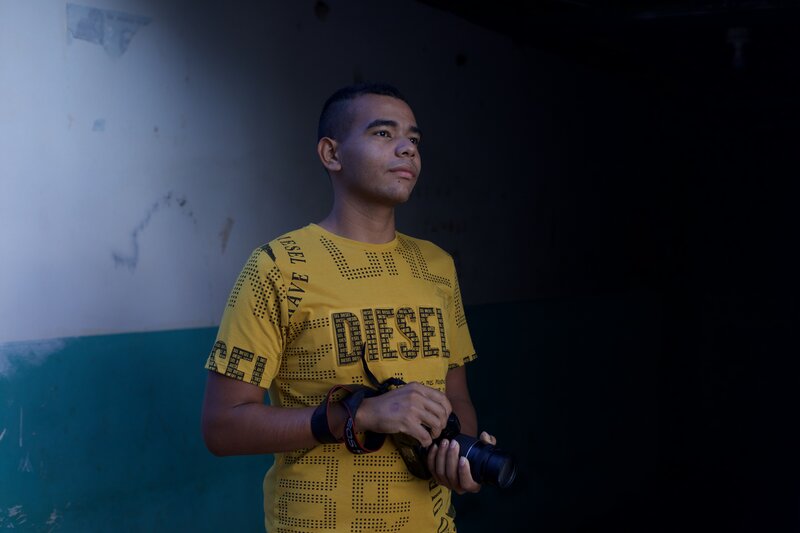
Cristian Daniel was born deep in the jungle in 2002, at the height of the armed conflict. But it would take many years before he uncovered the truth about his past. At 15, he discovered that he was actually from the Caribbean coast—until then, he had believed he was from Santander. He had grown up thinking his mother was a homemaker from Bucaramanga, that his father had passed away, and that he was the youngest of five siblings who made a living polishing floors to support the family.
But one afternoon in January 2017, a cousin revealed the truth: he had been born in the jungles of Magdalena, in the midst of the armed conflict. His mother had been a member of the former FARC-EP and had died giving birth to him. His father, one of the 13,000 signatories of the 2016 Final Peace Agreement, had only recently laid down his arms and was now living in a reintegration camp in Cesar, in a place called Tierra Grata.
Later that same month, a man claiming to be a peace signatory came to his home in Bucaramanga and confirmed the story. “Your father would like to meet you,” he said.
“I didn’t really want to go. I was afraid,” Cristian Daniel recalled from Bucaramanga, where he was spending a few vacation days with his adoptive mother before travelling to Cesar for the dignified handover of his biological mother’s remains. “Sure, I was a bit of a wayward kid, but I’d never had anything to do with the war.” His adoptive mother, Leonor, is a single mother and raised five children on her own. Before learning the truth, that was his only family.
The mother
Thanks to the joint efforts of the Unit for the Search for Persons Deemed as Missing (UBPD) and Corporación Reencuentros—an organization formed by 93 signatories of the Peace Agreement who now help search for Colombia’s disappeared—Cristian Daniel was finally able to learn the true identity of his mother. Her name was María del Pilar Pérez,* a native of Agustín Codazzi, Cesar. Before she went missing at the age of 17, she lived with her parents—a farm laborer and a homemaker—and her four younger siblings: two girls and two boys.
Her younger sister, Mariana,* says that although she was just a child, she vividly remembers the day María del Pilar disappeared: it was 11 May 1994. At three in the afternoon, a group of armed men driving a black Jeep arrived at the family’s farm in vereda Arroyo de Agua, in San Diego, Cesar.
Mariana remembers that María del Pilar was doing laundry. “When she saw the Jeep pull in, she said: ‘They’ve come to pick me up, I’m leaving.’ That was the last time I saw her,” recalled Mariana, who witnessed the scene. That day, Maria del Pilar was recruited.
Two years later, on 23 September 1996, in the municipality of Agustín Codazzi, eleven people were taken. Two returned alive, and seven were found nearly a decade later in a mass grave. The whereabouts of the remaining two are still unknown. Fearing they might suffer the same fate, the Pérez family, like so many others in the region, was displaced by the violence. They fled to Venezuela.
Three years ago, they returned to Colombia, back to the very farm from where their daughter had been taken. For over twenty years, the family had no word on her whereabouts. María del Pilar became one of the 126,895 people forcibly disappeared during Colombia’s armed conflict.
The father
In March 2017, after an unexpected visit from a peace signatory who revealed that his father was alive, Cristian decided to travel to Cesar to meet him, still unaware of the full story behind his biological mother’s life. He arrived at what seemed to be a reintegration camp, nestled between the municipalities of Manaure Balcón del Cesar and La Paz, in northern Colombia. Only later would he learn it was the Tierra Grata Territorial Area for Training and Reintegration (TATR).
The first thing he saw was a high-mountain army battalion and layers of police security. United Nations officials were also present, “wearing their blue vests and speaking with strange accents that made me feel like I had stepped into another country,” he remembered.
There, he met his biological father, Abel Antonio Flores Restrepo, a 59-year-old peace signatory who had spent 30 years in the ranks of the FARC under the alias ‘Wicho’. They lived together for just six months, but during that time, Abel shared his version of what had happened to Cristian’s mother. “Her name was Laura—that’s what everyone in the FARC called María del Pilar Pérez. She was kind, well-liked by everyone. She was a nursing assistant and always had small community projects going on. If a farmer was sick, she’d be the first to go there and help,” recalls Abel.
According to Abel, Laura died during childbirth at the age of 26 due to preeclampsia. “Doctors had warned her that the baby could not be delivered naturally, but she was forced to give birth out in the bush, near the vereda of Arenosa in Pivijay, Magdalena. There was no way to evacuate her, as the fighting was intense. It was right in the middle of Plan Patriota,” he explained. He wasn’t there when it happened, but the news still reached him. “It honestly broke my heart. I couldn’t do anything—I was far away.”
“It wasn’t possible to move the baby with the fighting going on,” he recalled. “So the boy spent nearly a year in the jungle.” First, the baby was entrusted to a commander named Ciro, who later passed him on to his partner. “Ciro,” Abel Antonio continued, “was killed in a bombing. After that, the boy was handed over to relatives in Bucaramanga, people who had nothing to do with the conflict. And he grew up with them. There was no other option,” Abel said from Tierra Grata. “We had to give him away because things were really bad back then. It was the only way to keep him alive.”
When Cristian Daniel turned one, he was taken to his adoptive mother, Leonor, becoming the youngest of her four children. At the time, she was facing a tragedy of her own, her husband had recently gone missing. To honor his memory, she named the boy after him.
In Bucaramanga, Cristian Daniel had a childhood much like any other. What he lacked was a clear path or something he truly loved. “I spent most of my time in the streets, I dropped out of school, and started hanging out with the wrong crowd,” Cristian Daniel admitted candidly.
Tierra Grata
Cristian Daniel decided to stay in Tierra Grata and begin a new chapter of his life. Before long, he met other young people who, like him, had only recently discovered that their fathers had been members of the FARC. He also witnessed the birth of children in the new families formed by former combatants now living within the law. According to the Agency for Reintegration and Normalization (ARN), Cristian Daniel is one of 10,342 children and teenagers in Colombia today who are growing up in communities of former FARC members committed to peace.
He joined La Rotativa, a grassroots media collective led by peace signatory Marcos Guevara, known for his expertise in photography and documentary filmmaking. Alongside him and a group of young people from the ETCR, Cristian Daniel took photography and video. These ignited his love for visual storytelling and set his life on a new path.
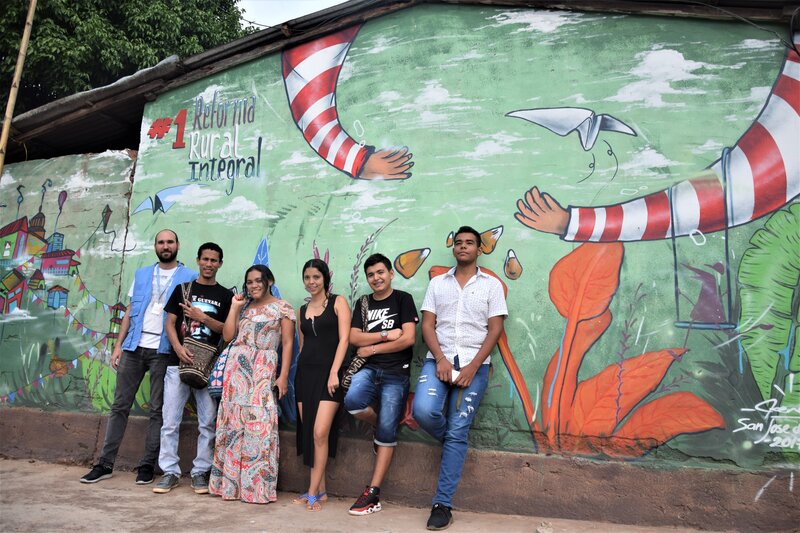
Through workshops delivered by the United Nations Verification Mission in Colombia—which continues to monitor the implementation of the Peace Agreement—he became a youth leader. He also learned about photography and communications, and gained access to support from government agencies, such as the ARN, as well as international cooperation, including training by the United Nations Development Programme (UNDP), the European Union, and others.
“It felt like discovering a whole new world,” Cristian Daniel said. “I fell in love with telling stories through photos and with all the training about peacebuilding I’ve received here. I loved working with other young people, exploring communications—it helped me see life from a different perspective, like through a camera lens.”

And now, he sees life differently: “Tierra Grata is a truly special place,” he said. “It’s full of opportunities. I’ve learned so much here. At the ETCR, I was able to finish high school and discover the worlds of photography and social communication. I even learned how to bake!”
“He’s a bright young man, eager to learn. I know he probably won’t feel much affection for me, as I wasn’t there to raise him. But I’m glad he stayed. I want him to have the opportunities we never had,” said his father, Abel Antonio Flores.
The search
But Cristian Daniel was not entirely happy in Tierra Grata, partly because he missed his mother and siblings in Bucaramanga, and partly because he had begun to hear stories about Laura from the other peace signatories who had known her during the war.
He felt a growing need to meet his maternal family and say a dignified goodbye to his biological mother. In that endeavor, he found an ally in Omar de Jesús Martínez Sierra, a former combatant who is now part of Corporación Reencuentros. Together, Cristian Daniel and Omar set out to find his mother and uncover the truth about Laura’s death.
The Pérez family, who had returned to their farm in 2022 after years of exile in Venezuela, also began their own search with the help of the Unit for the Search for Persons Deemed as Missing (UBPD).
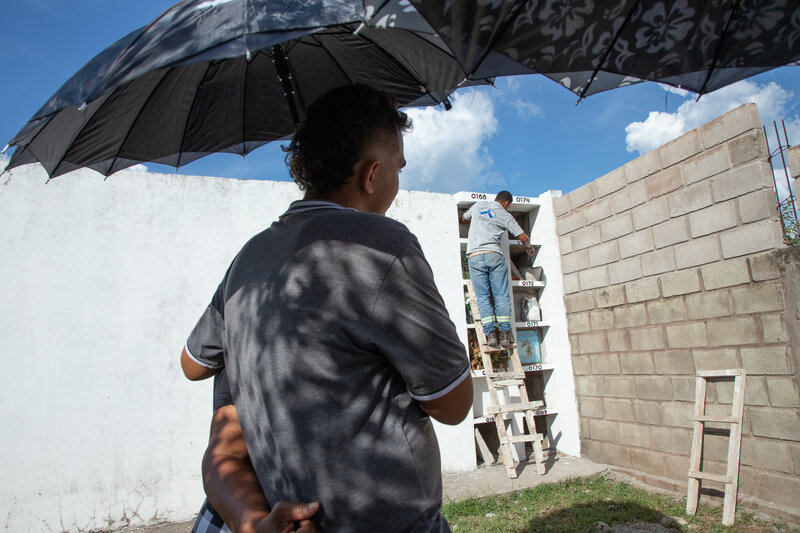
Meanwhile, with help from Abel and the support of Abelardo Caicedo, leader of Tierra Grata, Omar de Jesús began looking for Laura’s remains, unaware that the Pérez family were also looking for María del Pilar on their own. At the time, neither side knew they were looking for the same person.
Back in 2019, before they officially became an organization in 2023, Reencuentros—then still acting as search documenters under their Peace Agreement commitments—began georeferencing efforts and traveled to rural areas of San Diego and Aracataca, in Magdalena, to try to locate Laura’s burial site.
After an initial failed attempt, and with technical support from the International Committee of the Red Cross (ICRC), Cristian Daniel, together with the search team and following strict technical and scientific standards, succeeded in recovering his mother’s remains. Meanwhile, the UBPD began work to identify the remains and perform genetic testing to determine whether they belonged to Cristian Daniel’s biological mother.
The initial analysis confirmed that the remains were indeed those of Cristian Daniel’s mother, as the genetic results matched. But that was only the beginning. Elvira Luz Alarcón, Humanitarian and Extrajudicial Investigator for the UBPD in Cesar, recalls how they began tracking efforts to determine whether Laura was the same woman who had left the Pérez family home in 1994—whether she was María del Pilar Pérez.
“We visited educational institutions, documented the case, and the information matched,” the expert explained. “We conducted DNA tests, from the grandmother and the body, and after a lengthy technical process, we were able to confirm that it was indeed the same person.”
The grandparents
Thanks to these efforts, Cristian Daniel was reunited with his maternal family, met his grandparents, and finally heard the story of his mother’s life. And the Pérez family, for their part, finally learned the truth about her daughter’s death, and met a grandson they had not known existed.
“Meeting my grandparents was a calm, even ordinary, experience for me. But for them, it was a shock. They had been waiting for my mom to return alive. Instead, it was me who showed up. Someone who, they say, looks just like her. I think that surprised them. They cried and everything, but I just don’t have that ability to cry,” said Cristian Daniel, recalling this encounter.
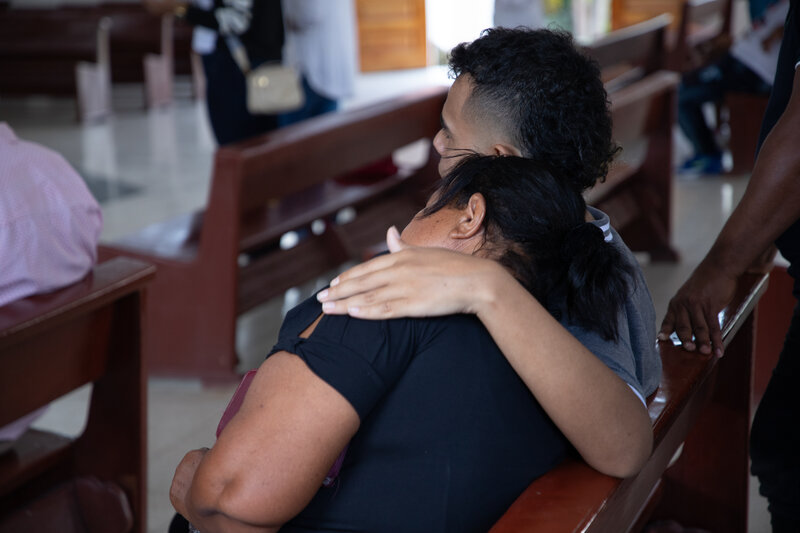
According to Mariana, Maria del Pilar’s sister, meeting Cristian Daniel stirred a mix of emotions: “We’re very happy to meet him because he looks so much like my sister, he’s a part of her, and that’s beautiful. But at the same time, we feel deep pain, the sorrow of knowing for sure that we’ll never see her again,” she said through tears. That same sorrow will be felt today, when María del Pilar’s remains are returned to her family and they say their final goodbye during a religious ceremony in Agustín Codazzi. Her family—the Pérez siblings, including Mariana, and of course Cristian Daniel—will be there.
They were accompanied by experts from the Search Unit who have already recovered, as of 31 May 2025, 2,885 bodies since the signing of the Peace Agreement. Corporación Reencuentros was also present. To date, the organization has documented 1,128 new cases of missing persons, 969 of which are currently at various stages of the UBPD’s search process.
Speaking about this case, Luz Janeth Forero Martínez, director of the UBPD, explained: “Bringing someone who has been missing for many years back to their family is an act of dignity and a recognition of that person’s life, legacy, and existence. It proves that disappearance did not succeed in wiping away a life story, cherished memories, or lived experiences. It is, in many ways, a form of resilience in the face of the violence that engulfed them.”
And so, it has been for Cristian Daniel. With this dignified handover, he hopes not only to close a cycle or a chapter of his life, but also to find who he really is and to ratify his will to continue being a youth leader for peace. “No young person should ever have to live through this. No more parents should be forced into war. That’s why I want to study, take my parents’ last names, and work for peace. Peace doesn’t happen on its own, and it’s not just the responsibility of the signatories of the Peace Agreement. Peace is something we must build together, as a society. As the son of former combatants, and with the clarity I have today, I want to do my part for peace in Colombia”.
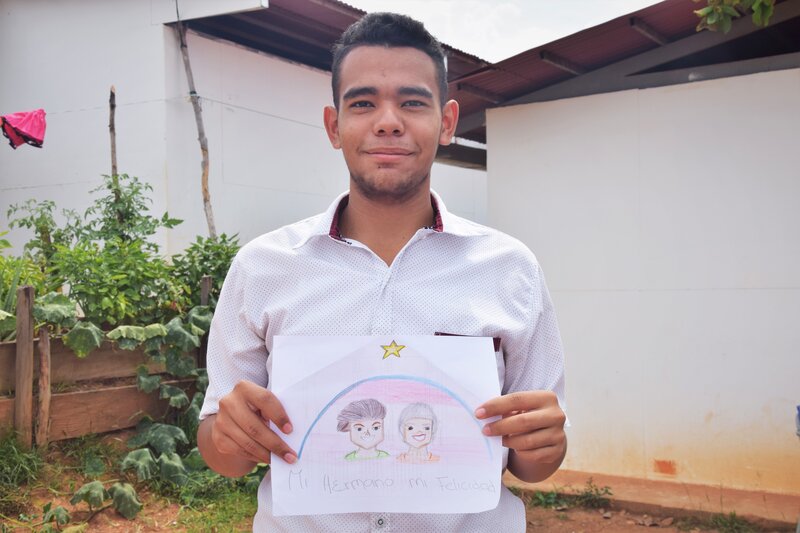
By: Jorge Quintero
Public Information Officer
UN Verification Mission in Colombia
 UN
UN





